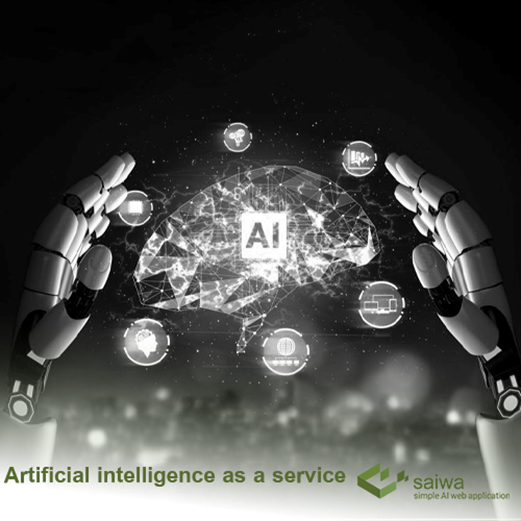AI in agriculture
Introduction
AI (Artificial Intelligence) has emerged as a game-changing technology in various industries, and agriculture is no exception. AI-powered solutions are revolutionizing farming practices by leveraging data analytics, machine learning, computer vision, and robotics to optimize crop production, improve resource management, and enhance sustainability. In this essay, we will explore the key applications of AI in agriculture and the transformative impact it has on the industry.
Enhancing Crop Production and Yield
Precision Farming: AI enables precision farming techniques that optimize crop production by analyzing data from various sources such as sensors, drones, and satellite imagery.
Machine learning algorithms process this data to provide insights on soil conditions, irrigation needs, and disease detection, helping farmers make informed decisions and apply resources efficiently.
Smart Irrigation: AI-based irrigation systems use data on weather patterns, soil moisture levels, and crop water requirements to automate irrigation processes.
By adjusting water delivery based on real-time data, smart irrigation helps conserve water, reduce costs, and ensure optimal hydration for crops.
Crop Monitoring and Disease Detection: Computer vision and machine learning algorithms analyze images captured by drones or cameras to monitor crop health and detect diseases or pests.
Early detection allows farmers to take timely action, prevent crop loss, and reduce the need for chemical interventions.
Optimizing Resource Management
Efficient Resource Allocation: AI algorithms analyze historical data, weather patterns, and crop requirements to optimize resource allocation, including seed selection, fertilizer application, and pesticide usage.
By tailoring inputs to specific needs, farmers can reduce waste, minimize environmental impact, and improve productivity.
Predictive Analytics for Yield Forecasting: AI models combine historical data, real-time inputs, and weather predictions to provide accurate yield forecasts.
Farmers can use this information to plan harvests, manage storage facilities, and make informed decisions regarding market pricing and distribution.
Automated Equipment and Robotics: AI-powered robots and autonomous vehicles can perform tasks such as seeding, planting, weeding, and harvesting with precision and efficiency.
By automating labor-intensive processes, farmers can reduce costs, minimize human error, and optimize productivity.
Sustainability and Environmental Impact
Soil Health Monitoring: AI technologies analyze soil data to assess nutrient levels, soil composition, and erosion risks.
By monitoring soil health, farmers can implement targeted interventions and conservation practices to improve soil quality and reduce environmental degradation.
Crop Rotation and Pest Management: AI models leverage historical data to recommend crop rotation schedules that minimize soil depletion and pest infestations.
By diversifying crops and implementing integrated pest management strategies, farmers can reduce reliance on pesticides and promote ecological balance.
Climate and Weather Predictions: AI algorithms analyze climate data to provide accurate weather predictions, helping farmers make informed decisions on planting, irrigation, and crop protection.
By adapting farming practices to changing climate conditions, farmers can mitigate risks and optimize resource management.
Challenges and Future Directions
Data Quality and Accessibility: The success of AI in agriculture relies on the availability of high-quality and accessible data.
Addressing issues related to data collection, interoperability, and data privacy will be crucial for the widespread adoption of AI technologies.
Adoption and Technical Expertise: The integration of AI into agricultural practices requires technical expertise and training.
Ensuring that farmers have access to the necessary skills and resources to adopt AI technologies will be essential for its successful implementation.
Ethical Considerations: As AI becomes more pervasive in agriculture, ethical considerations such as data privacy, algorithmic bias, and transparency need to be addressed.
Establishing ethical guidelines and regulatory frameworks will ensure responsible and equitable use of AI in agriculture.
Advancements and Collaboration: Continued advancements in AI, such as deep learning, Internet of Things (IoT) integration, and edge computing, will further enhance the capabilities of AI in agriculture.
Collaboration among researchers, farmers, and technology providers will be essential to drive innovation and develop tailored AI solutions for specific farming contexts.
Disease and Pest Management
AI-powered systems can detect diseases and pests in crops more accurately and at an early stage.
By analyzing patterns and symptoms, AI algorithms can provide recommendations for targeted treatments, minimizing the use of chemicals and reducing crop losses.
Market Analysis and Predictive Pricing
AI can analyze market trends, historical data, and consumer preferences to provide farmers with insights on crop pricing and demand.
This information enables farmers to make informed decisions regarding crop selection, production levels, and marketing strategies.
Livestock Management
AI technologies, such as facial recognition and computer vision, can monitor and analyze the health and behavior of livestock.
This helps farmers identify signs of distress, optimize feeding schedules, and improve overall animal welfare.
Supply Chain Optimization
AI can optimize the agricultural supply chain by analyzing data on transportation, logistics, and inventory management.
This enables efficient distribution, reduces waste, and ensures timely delivery of fresh produce to consumers.
saiwa services
saiwa is a B2B and B2C platform which provides artificial intelligence and machine learning software as a service (SaaS). Here, individuals and companies are empowered to explore and deploy AI services suited to their needs, with lower risk, without the need for expert knowledge of ML and with low initial investment. saiwa provides intuitive and easy-to-use web services for many AI applications. Users can try the services on their own data at no cost, forever! Below you will find a list of our current services. We are always open to work with clients to tailor our services according to their unique needs.
Conclusion
AI is transforming agriculture by empowering farmers with data-driven insights, optimized resource management, and sustainable practices. From precision farming to efficient resource allocation and environmental impact reduction, AI is revolutionizing crop production, enhancing yields, and promoting sustainability. Overcoming challenges related to data quality, adoption, ethics, and collaboration will be crucial for the widespread adoption and responsible use of AI technologies in agriculture. As AI continues to advance, it holds immense potential to drive agricultural innovation, improve global food security, and ensure a sustainable future for farming.





Comments
Post a Comment